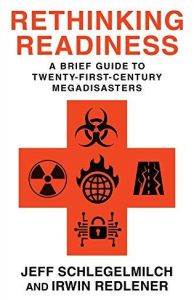Melden Sie sich bei getAbstract an, um die Zusammenfassung zu erhalten.

Melden Sie sich bei getAbstract an, um die Zusammenfassung zu erhalten.
Irwin Redlener and Jeff Schlegelmilch
Rethinking Readiness
A Brief Guide to Twenty-First-Century Megadisasters
Columbia UP, 2020
Was ist drin?
How communities and nations can prepare for five major 21st-century threats.
Recommendation
Disaster-preparedness expert Jeff Schlegelmilch offers an introduction to disaster preparedness for those in the public, private and nonprofit sectors. Following a foreword by Irwin Redlener, whom the author says inspired the book, Schlegelmilch outlines five major 21st-century threats – climate change, cyberattacks, infrastructure failure, nuclear weapons and infectious disease (writing before the COVID-19 pandemic) – and describes best practices for reducing community and national vulnerability and for disaster response. He illustrates how the emerging field of disaster science helps societies cultivate what the US Federal Emergency Management Agency (FEMA) calls a “culture of preparedness.”
Summary
About the Authors
Jeff Schlegelmilch is deputy director of the National Center for Disaster Preparedness at Columbia University’s Earth Institute. Irwin Redlener is director and founder of the National Center for Disaster Preparedness.



















Comment on this summary